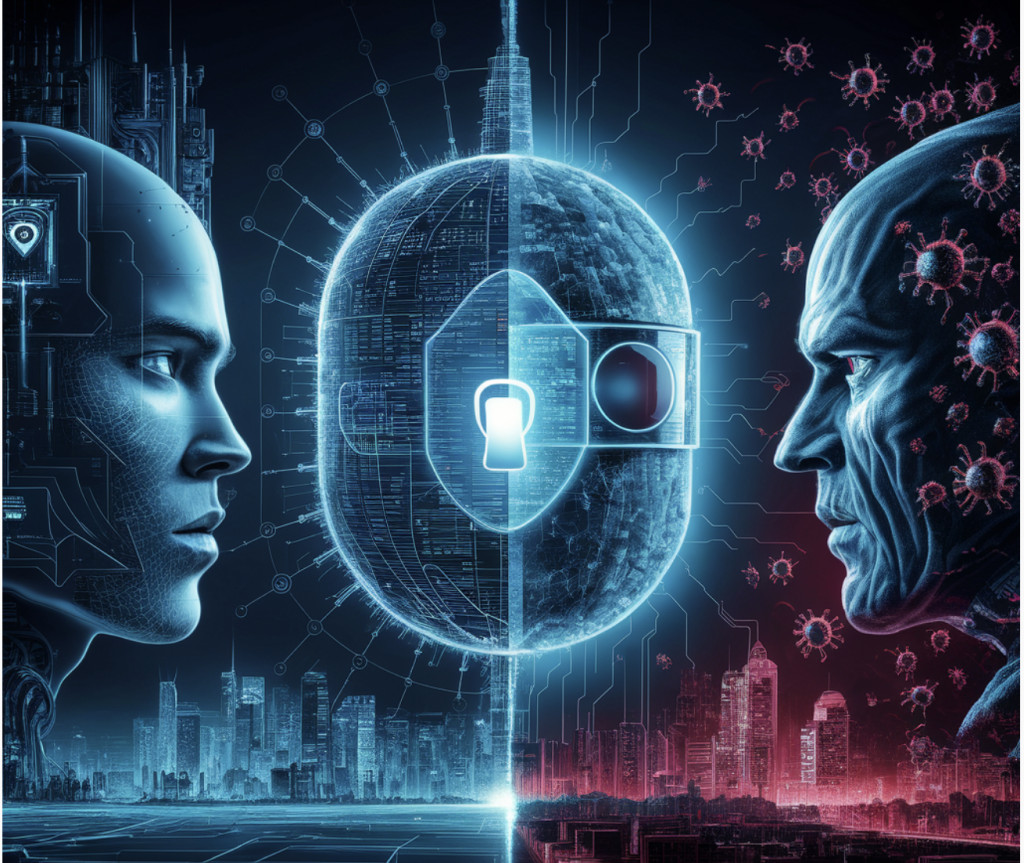AI and ML are revolutionizing cybersecurity by significantly boosting defensive and offensive capabilities. On the defensive front, these technologies empower systems to detect better and counter cyber threats. AI and ML algorithms excel in processing extensive datasets, enabling them to identify patterns and anomalies far more efficiently than traditional approaches. Techniques such as clustering, self-organizing maps, and classification and regression trees (CARTs) have become essential in intrusion detection systems, enhancing their accuracy and responsiveness. This improved capability extends to asset management, risk assessment, and overall governance, reinforcing cybersecurity infrastructures against the growing complexity of modern attacks.
Conversely, AI and ML empower attackers, making traditional cyber attack vectors more potent and sophisticated. Due to AI and ML’s capabilities in automating and adapting attacks, malware, phishing, DDoS, and man-in-the-middle attacks are becoming harder to detect and defend against. AI-augmented cryptanalysis and real-time spoofing enhance the effectiveness of man-in-the-middle attacks, while advanced algorithms make SQL injections and DNS tunneling more elusive. Additionally, generative AI introduces new threats, such as data poisoning and the creation of highly convincing phishing emails. The dual-use nature of AI and ML in cybersecurity underscores the need for continuous advancement and adaptation in defensive strategies to counteract the evolving landscape of cyber threats.
AI/ML and the Evolution of Cyber Attacks:
AI and ML have inaugurated a new era of cyber threats, amplifying conventional attack methods while introducing innovative cyber attacks. These technologies empower traditional threats such as malware, distributed denial-of-service (DDoS) attacks, man-in-the-middle (MitM) attacks, and phishing to evolve into more sophisticated and adaptable forms. For example, AI-driven malware like Deep Locker can bypass conventional security measures by remaining inactive until specific conditions are met, showcasing advanced situational awareness and stealth capabilities. Furthermore, AI-enhanced ransomware can adjust ransom demands dynamically based on predefined criteria, presenting a formidable challenge to cybersecurity defenses.
In phishing, AI enables the creation of highly targeted spear phishing campaigns that leverage AI models to mimic human communication patterns, making fraudulent messages harder to detect. Tools like ChatGPT can be utilized to craft convincing phishing emails that evade spam filters by learning from past interactions. Additionally, AI advancements in voice cloning and video manipulation raise concerns about future AI-driven voice and video phishing attacks, potentially exploiting digital trust mechanisms in novel ways.
AI’s impact on DDoS attacks is equally profound. AI-driven botnets can adapt offensive measures and launch attacks with unprecedented sophistication. These botnets can autonomously adjust attack strategies based on real-time network conditions, surpassing traditional mitigation techniques. Furthermore, AI and ML techniques enhance the effectiveness of man-in-the-middle attacks by enabling intelligent targeting and real-time spoofing, exploiting vulnerabilities in encryption protocols, and leveraging AI-driven traffic analysis for stealthier attacks.
In database security, AI-driven SQL injection attacks can bypass traditional defenses by generating sophisticated queries that exploit vulnerabilities in web applications. AI models can analyze response times and patterns to execute time-based blind SQL injections, circumventing detection mechanisms. Similarly, AI-powered DNS tunneling attacks leverage machine learning for payload and traffic analysis, enabling attackers to evade detection by exploiting DNS vulnerabilities and abuse.
Common Themes and Exacerbating Factors in AI-Powered Cyber Attacks:
AI and ML enhance cyber attacks through automation, enabling efficient deployment of attacks with adaptive and self-guided capabilities. These technologies excel at analyzing data to identify vulnerabilities and patterns that human attackers might overlook, opening new attack vectors. Their adaptive behavior allows them to evade detection and maximize damage, mimicking human and network behaviors to deceive defenses effectively. Factors exacerbating these threats include widespread access to AI tools like LLMs, IoT’s vast attack surface due to diverse vulnerabilities, and the potential use of cloud-based computing power for malicious purposes. State-sponsored initiatives could weaponize AI for destructive cyber attacks, while AI/ML-specific vectors like data poisoning pose emerging threats yet to be fully understood and countered.
Conclusion: Impact of AI and ML on Cyber Security:
The current academic literature highlights AI and ML’s predominant use in enhancing cyber security measures rather than solely focusing on developing more sophisticated cyber attacks. However, many cutting-edge threats will be identified once they are actively addressed. Millions of devices globally may already face AI and ML-powered cyber attacks that exploit unique attack vectors. Organizations with substantial computing resources can deploy advanced AI/ML defenses, yet these technologies can also easily identify vulnerabilities in existing defenses. Ultima ML significantly enhances cyber attacks and fortifies defenses, necessitating a comprehensive approach considering offensive and defensive capabilities.
Check out the Paper. All credit for this research goes to the researchers of this project. Also, don’t forget to follow us on Twitter.Â
Join our Telegram Channel and LinkedIn Group.
If you like our work, you will love our newsletter..
Don’t Forget to join our 46k+ ML SubReddit
The post The Dual Impact of AI and Machine Learning: Revolutionizing Cybersecurity and Amplifying Cyber Threats appeared first on MarkTechPost.
Source: Read MoreÂ

